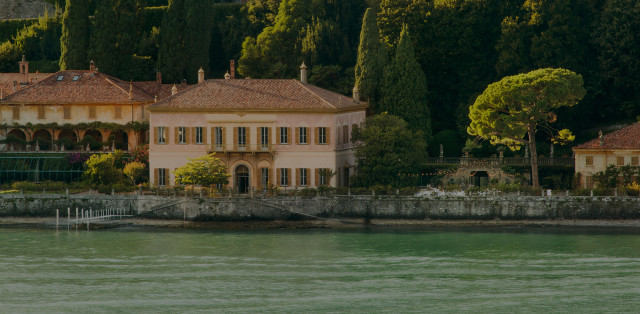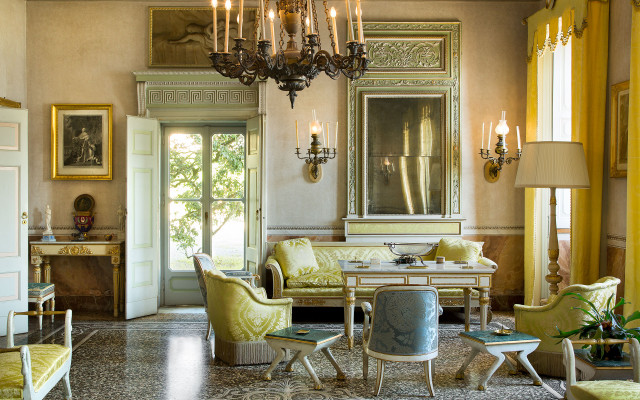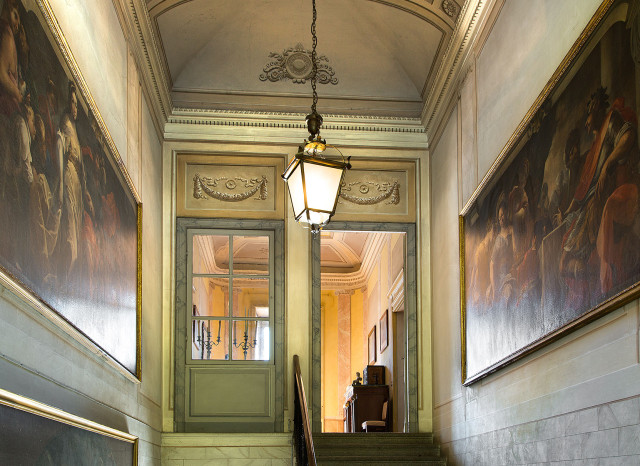Photography by Francesco Arena
Giovanni Muggiasca built what would become Villa Pizzo on land straddling the Via Regina upon which olive trees and vines flourished. It was on 9th July 1453 that the first house was completed, then little more than a simple rural dwelling. In 1630 the plague reached Como and the Muggiasca family took refuge here, hosting several families from the area. In return they asked these to help with the reclamation of the site and improvements to grounds so that, by the middle of the century, and with the rebuilding works, it had become a noble house with simple architecture and rhythmical division of its floors.
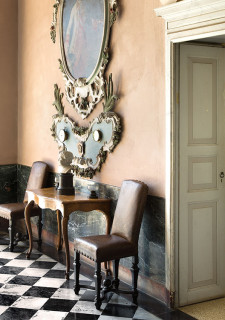
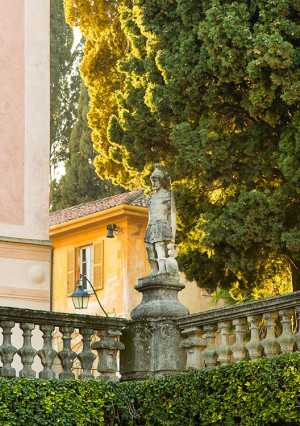
At the end of the eighteenth century a small oratory was built on the villa’s eastern side. Towards the second half of the same century, Giovanni Battista Muggiasca, the future bishop of Como, decorated it in the fashionable neoclassical style and built a monument to his fellow citizen Alessandro Volta in the grounds of the residence.
In 1865 it was bought by Madame Elise Musard, grand dame of the Second Empire and a favourite of King William of Holland. She gave an exotic and sophisticated touch to the interiors, refurbishing all the rooms and having the ceiling frescoes covered over with pictorial stories inspired by Pompeii, which was much à la mode at this time. The facade was treated to the pink that still characterises it to this day while the roof was adorned with touches of Chinoiserie.
Just a few years later, in 1871, Madame Musard left the villa and it was sold to the Volpi Bassani family. Apart from the construction of a new dock, the Volpi Bassani family kept the villa’s beauty unchanged over time, with its painted rooms, the contrasting styles and the fine paintings and frescoes that decorate the ceilings.

